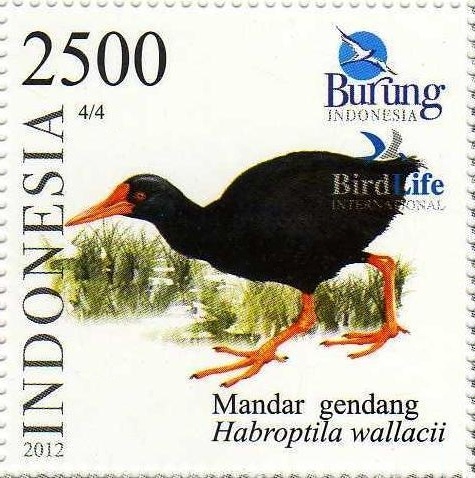
Most birds in the rail family (Rallidae) are extremely elusive. They make noise during the breeding season but, except for coots and gallinules, they hide while they’re doing it. Two of the rails on my Life List are birds I heard but didn’t see.
So when I visited Wikipedia‘s website on April Fools Day I thought they were joking by featuring an article on the Invisible rail. Really? Aren’t all rails invisible?
However the invisible rail is real. Also called Wallace’s or the drummer rail (Habroptila wallacii) it cannot fly and lives in only one place on Earth — the impenetrable, thorny, sago swamps on the Indonesian island of Halmahera. This quote from the Wikipedia article describes its habitat:
German ornithologist Gerd Heinrich, who prepared for his Halmahera trip by rolling in stinging nettles, wrote of the sago swamp habitat in the 1930s:
I am solidly confident no European has ever seen this rail alive, for that requires such a degree of toughening and such demands on oneself as I cannot so easily attribute to others. Habroptila is shielded by the awful thorns of the sago swamps… In this thorn wilderness, I walked barefoot and half-naked for weeks.
The invisible rail is so rarely seen that most of its online photos are of a single, recently dead bird. The easiest way to get close to one is to buy its Indonesian commemorative postage stamp for 2,500 rupiah or about 19 cents.
Despite its protective habitat the rail is listed as Vulnerable by the International Union for Conservation of Nature because it’s a flightless island species, its only habitat is being harvested and converted to farming, and the locals eat the rail if they can trap it.
No one’s sure how many invisible rails exist. If they go extinct they will be truly invisible.
(image of an Indonesian postage stamp featuring Habroptila wallacii, the Invisible Rail. Click on the image to see the original)